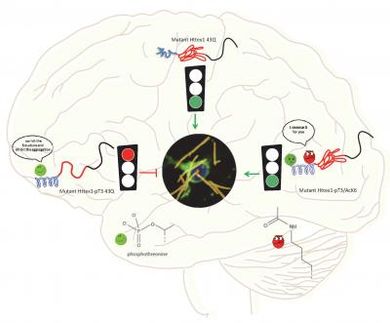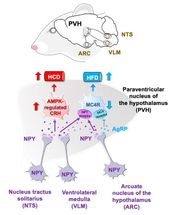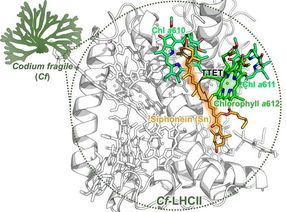Scripps Research scientists crack mystery of protein's dual function
The work provides insight into potential therapeutic for cancer and eye diseases
Advertisement
Researchers at The Scripps Research Institute have solved a 10-year-old mystery of how a single protein from an ancient family of enzymes can have two completely distinct roles in the body. In addition to providing guidance for understanding other molecules in the family, the research supplies a theoretical underpinning for the protein's possible use for combating diseases including cancer and macular degeneration. The research was published in Nature Structural and molecular biology .
The scientists, led by Scripps Research Associate Professor Xiang-Lei Yang, focused on a molecule called human tryptophanyl-tRNA synthetase (TrpRS), finding that it contains a "functional switch" that enables it to perform two different functions. In one of its forms, the molecule acts to facilitate protein synthesis. In the second form, the same molecule works to inhibit the formation of new blood vessels — an effect that, if successfully harnessed, could be medically useful.
For some time, scientists have known that the aminoacyl tRNA synthetase family is composed of 20 ancient enzymes that attach the correct amino acid to a tRNA as the first step in the synthesis of proteins. The mystery of the protein family's dual functionality, however, was born about a decade ago, with the publication of a 1999 paper in the journal Science by Paul Schimmel, who is Ernest and Jean Hahn Professor of Molecular Biology and Chemistry and a member of The Skaggs Institute for Chemical Biology at Scripps Research, in collaboration with a member of his lab at that time, Keisuke Wakasugi.
Despite the interest in tRNA synthetases, however, no one has been able to figure out exactly how they perform their different roles — until now. In the current study, the research team used a combination of techniques including structural modeling analysis, mutagenesis, and cell-based functional studies to unravel the secrets of TrpRS. The scientists identified the specific molecular changes that enabled TrpRS to perform one function or another.
In the study, the scientists show that, for its role in protein synthesis, TrpRS is typically in its full-length form. This form of the molecule contains a tryptophan-binding pocket that enables it to bind with the amino acid and shepherd it to where it is needed in protein synthesis.
In the second active form, however, the protein must first be broken into fragments by the body, creating a piece called T2-TrpRS. With the removal of the end of the full-length protein (the N-domain), new grooves in the T2-TrpRS protein fragment are revealed. Containing the now-exposed tryptophan-binding pocket, the grooves fit together with side chains of another molecule, VE-cadherin — known to be indispensable for proper vascular development. Interestingly, the new study found that tryptophan acts to inhibit of the vasculature function of TrpRS, locking the protein into its protein-synthesis form.
Yang notes that the therapeutic potential of TrpRS and other tRNA synthetases are particularly good because they normally exist in abundant amounts in the body.
"Naturally, you'd imagine the body's tolerance for such a protein is pretty good," she said, "and we could use the activated form of the molecule."
In addition, Yang points out that TrpRS is intriguing because it does not effect existing blood vessel growth, only new blood vessel formation, reducing the odds of negative side effects from its use.

























































